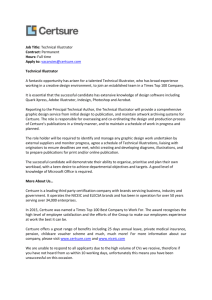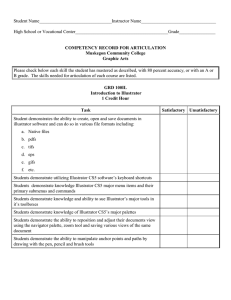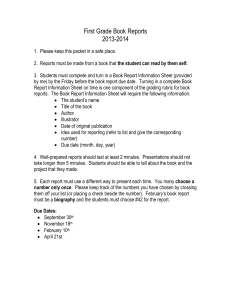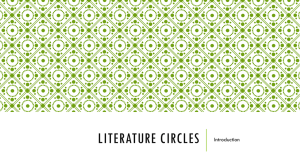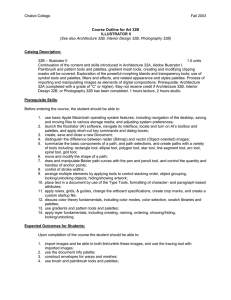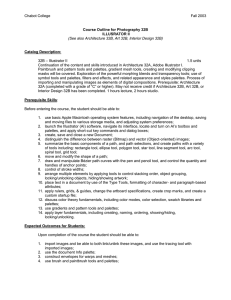Chabot College Fall 2007 32B - Illustrator II
advertisement
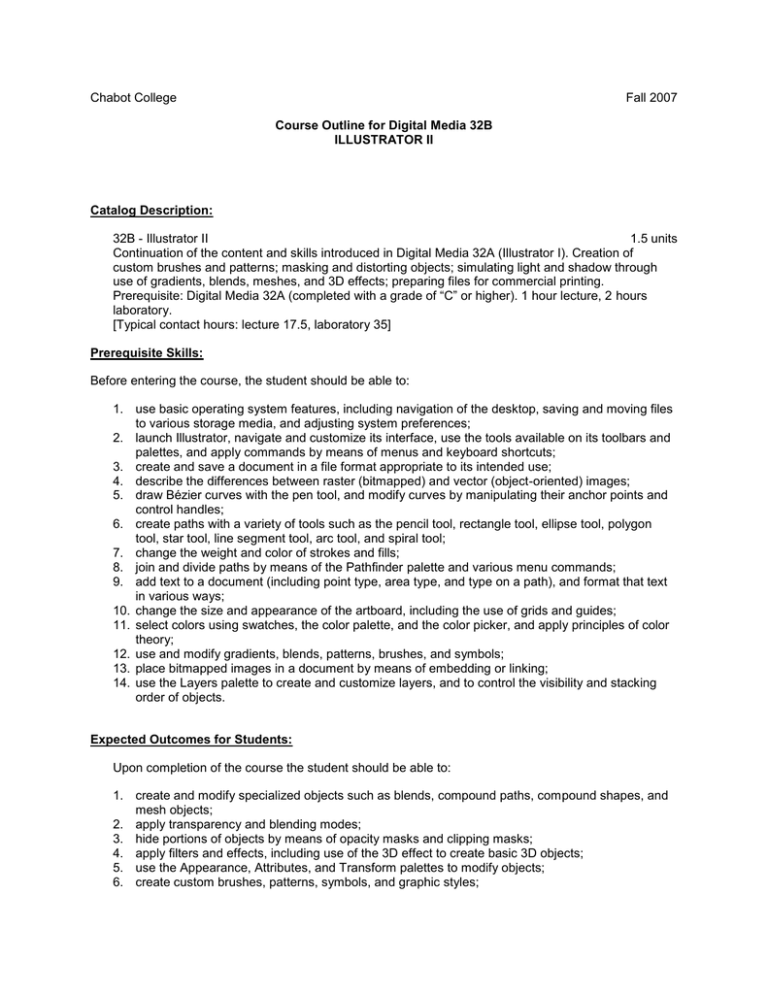
Chabot College Fall 2007 Course Outline for Digital Media 32B ILLUSTRATOR II Catalog Description: 32B - Illustrator II 1.5 units Continuation of the content and skills introduced in Digital Media 32A (Illustrator I). Creation of custom brushes and patterns; masking and distorting objects; simulating light and shadow through use of gradients, blends, meshes, and 3D effects; preparing files for commercial printing. Prerequisite: Digital Media 32A (completed with a grade of “C” or higher). 1 hour lecture, 2 hours laboratory. [Typical contact hours: lecture 17.5, laboratory 35] Prerequisite Skills: Before entering the course, the student should be able to: 1. use basic operating system features, including navigation of the desktop, saving and moving files to various storage media, and adjusting system preferences; 2. launch Illustrator, navigate and customize its interface, use the tools available on its toolbars and palettes, and apply commands by means of menus and keyboard shortcuts; 3. create and save a document in a file format appropriate to its intended use; 4. describe the differences between raster (bitmapped) and vector (object-oriented) images; 5. draw Bézier curves with the pen tool, and modify curves by manipulating their anchor points and control handles; 6. create paths with a variety of tools such as the pencil tool, rectangle tool, ellipse tool, polygon tool, star tool, line segment tool, arc tool, and spiral tool; 7. change the weight and color of strokes and fills; 8. join and divide paths by means of the Pathfinder palette and various menu commands; 9. add text to a document (including point type, area type, and type on a path), and format that text in various ways; 10. change the size and appearance of the artboard, including the use of grids and guides; 11. select colors using swatches, the color palette, and the color picker, and apply principles of color theory; 12. use and modify gradients, blends, patterns, brushes, and symbols; 13. place bitmapped images in a document by means of embedding or linking; 14. use the Layers palette to create and customize layers, and to control the visibility and stacking order of objects. Expected Outcomes for Students: Upon completion of the course the student should be able to: 1. create and modify specialized objects such as blends, compound paths, compound shapes, and mesh objects; 2. apply transparency and blending modes; 3. hide portions of objects by means of opacity masks and clipping masks; 4. apply filters and effects, including use of the 3D effect to create basic 3D objects; 5. use the Appearance, Attributes, and Transform palettes to modify objects; 6. create custom brushes, patterns, symbols, and graphic styles; Chabot College Course Outline for Digital Media 32B, page 2 Fall 2007 7. distort objects by means of warp and mesh envelopes; 8. prepare images for spot-color printing and four-color process printing; 9. describe how Illustrator fits into a typical print production workflow. Course Content: 1. Creating and modifying specialized objects such as blends, compound paths, compound shapes, and mesh objects 2. Applying transparency and blending modes 3. Hiding portions of objects by means of opacity masks and clipping masks 4. Applying filters and effects, including use of the 3D effect to create basic 3D objects 5. Using the Appearance, Attributes, and Transform palettes to modify objects 6. Creating custom brushes, patterns, symbols, and graphic styles 7. Distorting objects by means of warp and mesh envelopes 8. Preparing images for spot-color printing and four-color process printing 9. Illustrator's role in a typical print production workflow Methods of Presentation: 1. Computer demonstrations 2. Lecture with whiteboard Assignments and Methods of Evaluating Student Progress: 1. Typical Assignments a. Create a drawing file incorporating custom brushes and patterns b. Create a drawing file that uses gradients, blends, and meshes to simulate the play of light on the surface of an object c. Create a drawing file that uses masks and effects to capture attention d. Create a final project using a majority of the drawing tools studied in this course. 2. Methods of Evaluating Student Progress a. Homework assignments b. Quizzes and exams, including a final exam Textbook(s) (Typical): Adobe Illustrator CS2 Classroom in a Book, Adobe Creative Team, Adobe Press, June 17, 2005 Special Student Materials: Portable file-storage device, such as a USB flash drive

